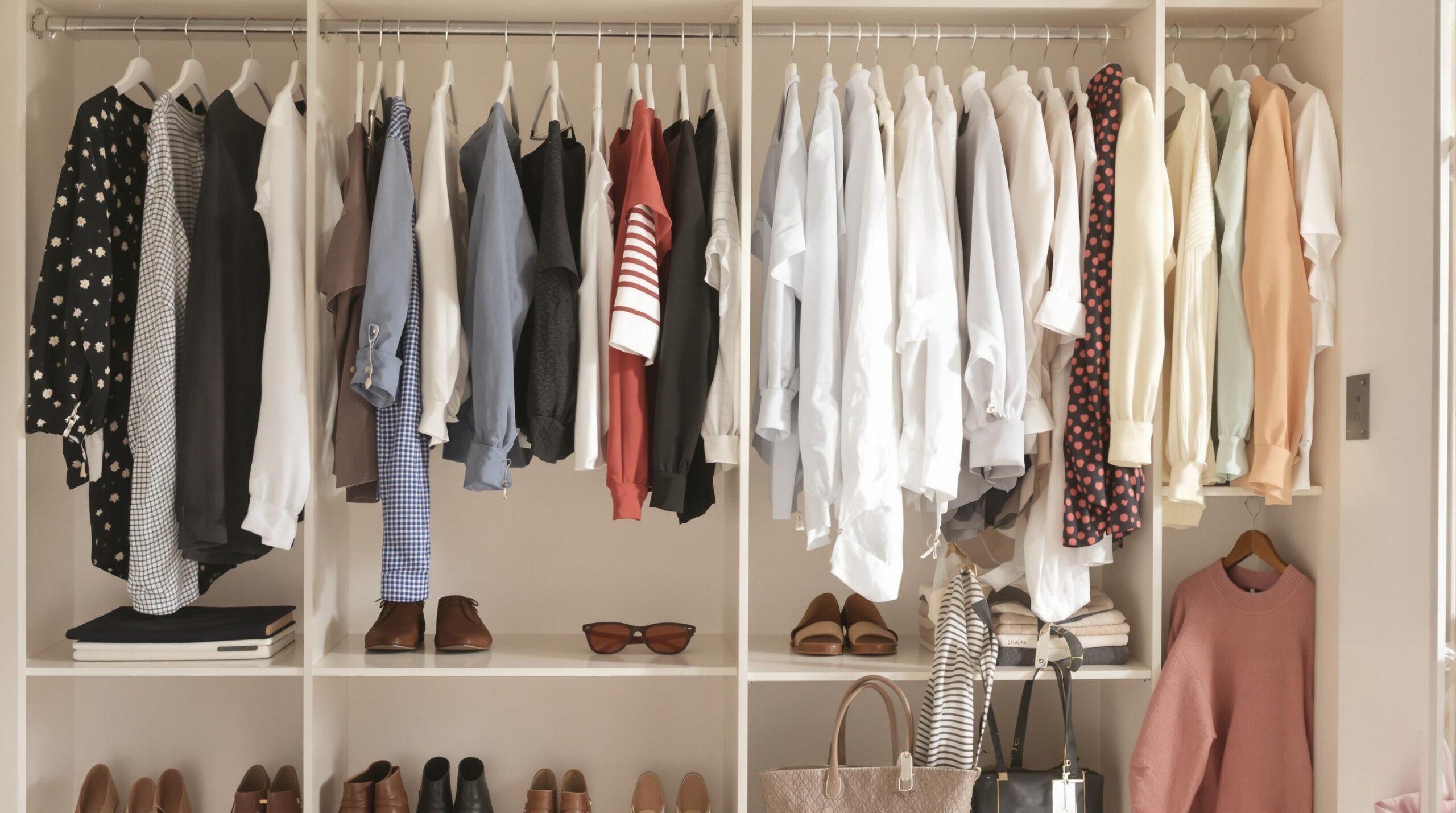Creating a wardrobe seamlessly combining style and sustainability is an increasingly popular goal. The concept of a capsule wardrobe has become a key strategy to achieve this balance. By focusing on quality over quantity, capsule wardrobes offer a streamlined, efficient approach to dressing.
Understanding the Capsule Wardrobe Concept
A capsule wardrobe is a curated collection of essential clothing items. These items mix and match to create various outfits suitable for multiple occasions. Typically, capsule wardrobes consist of versatile, timeless pieces that withstand changing trends. The idea is to pare down possessions to essential items that you love wearing.
The origins of the capsule wardrobe can be traced back to the 1970s. British boutique owner Susie Faux coined the term “capsule wardrobe.” She believed in owning fewer clothes that were versatile and easily interchanged. This notion gained further traction when American designer Donna Karan introduced her “Seven Easy Pieces” collection in 1985. Her collection further popularized the minimalist wardrobe concept.
Building Effortless Style Through Capsule Wardrobes
Capsule wardrobes streamline the process of getting dressed. With fewer items to choose from, decision fatigue decreases significantly. This simplicity leads to increased confidence in personal style choices. Each piece in a capsule wardrobe is carefully selected, ensuring that it flatters the wearer and coordinates with other items.
Creating a capsule wardrobe involves assessing personal style preferences and lifestyle needs. This evaluation ensures that each item serves a purpose in the wardrobe. The result is a wardrobe where every item is a favorite, eliminating the dreaded “I have nothing to wear” dilemma. This approach enables individuals to compose stylish outfits for any occasion effortlessly.
The Role of Quality Over Quantity
Investing in quality pieces is central to the capsule wardrobe concept. These items are often more durable, retaining their appearance and function over time. High-quality materials and craftsmanship ensure longevity, reducing the need for frequent replacements. This durability contributes to both the sustainability and cost-effectiveness of maintaining a capsule wardrobe.
By focusing on quality, capsule wardrobes promote responsible consumer practices. They encourage a shift away from fast fashion, which often compromises quality for volume. Instead of impulsive purchasing, individuals cultivate a mindful approach to acquiring clothing. This shift reduces waste and encourages the fashion industry to adopt more sustainable practices.
The Environmental Benefits of Capsule Wardrobes
Capsule wardrobes are inherently aligned with sustainable living principles. By reducing the number of clothing items owned, individuals contribute to decreasing textile waste. In 2018, the Environmental Protection Agency estimated that 17 million tons of textile waste were generated in the U.S. alone. Capsule wardrobes help mitigate this impact by focusing on longevity and versatility.
Furthermore, capsule wardrobes support ethical fashion choices by emphasizing timeless, classic styles. These styles transcend seasonal trends, reducing the need for excessive shopping. The result is a decreased demand for fast fashion, which often relies on exploitative labor practices. Capsule wardrobes play a part in challenging these practices by supporting sustainable and ethical brands.
Transitioning to a capsule wardrobe also encourages a heightened awareness of consumption habits. Individuals become more conscientious about shopping, often opting for second-hand or vintage pieces. This approach further reduces the environmental impact associated with producing new clothing items.
Overcoming the Challenges of a Capsule Wardrobe
Despite the benefits, transitioning to a capsule wardrobe can present challenges. One of the main obstacles is the initial investment in key pieces. Quality trousers, coats, and shoes may come with higher upfront costs. However, these expenses can be offset by reduced future spending on clothing.
Another challenge lies in letting go of excess clothing. This process may be daunting for those accustomed to more extensive wardrobes overflowing with options. The transition requires a shift in mindset, focusing on the value of quality and versatility over quantity. Establishing clear criteria for what cuts can facilitate this transition.
Adapting to a capsule wardrobe also involves embracing creativity within constraints. With fewer items, styling requires reliance on complementary, interchangeable pieces. This creative challenge can be rewarding, leading to more innovative fashion choices and personal style discovery.
Adapting Capsule Wardrobes to Individual Needs
Each individual’s capsule wardrobe should reflect personal tastes, lifestyle, and climate considerations. There’s no one-size-fits-all template for building a capsule wardrobe. This flexibility allows for customization that accommodates personal and environmental needs.
Formal work environments may necessitate a more significant number of tailored pieces. Conversely, individuals with casual lifestyles may focus on denim and versatile knitwear. A person’s geographical location and climate will also influence the composition of their capsule wardrobe. For instance, someone in a temperate region will require different items than someone in a tropical or cold climate.
Adopting a capsule wardrobe does not mean sacrificing unique style. It empowers individuals to focus on defining pieces that enhance their look. This approach encourages authenticity and more explicit expression of personal tastes and aesthetics.
The Long-term Benefits of Capsule Wardrobes
Capsule wardrobes offer numerous long-term benefits, both personally and globally. On a personal level, they enhance confidence and satisfaction by simplifying getting dressed. Reducing decision fatigue allows individuals to focus energy on other areas of life.
This approach encourages mindful fashion consumption and explores creativity within constraints. It fosters a culture of sustainability and ethical fashion practices.
Fashion brands are taking note of this growing trend. More companies are developing collections of versatile and timeless clothing. This shift promotes better manufacturing practices and helps reduce the global fashion industry’s environmental impact.
Conclusion
Capsule wardrobes offer a practical and stylish solution to the challenges of modern fashion consumption. By emphasizing quality, versatility, and sustainability, they allow individuals to cultivate a personal style that transcends seasonal trends. Capsule wardrobes assure less environmental impact and ethical fashion choices. As this trend continues to grow, it holds the potential to reshape the fashion industry. Individuals and brands can unite in the pursuit of effortless style and sustainability. Embracing a capsule wardrobe reflects a commitment to values, personal style, and conservation.

